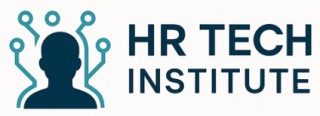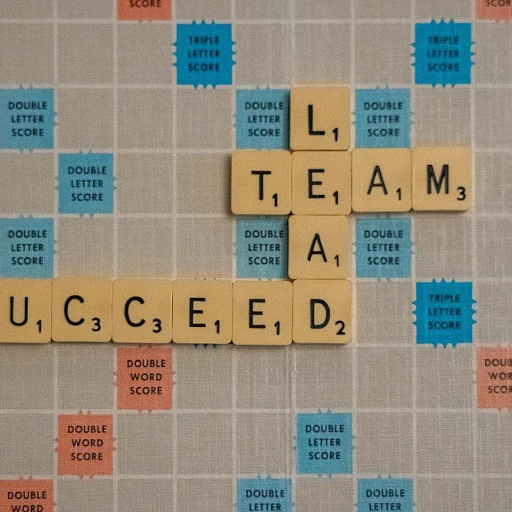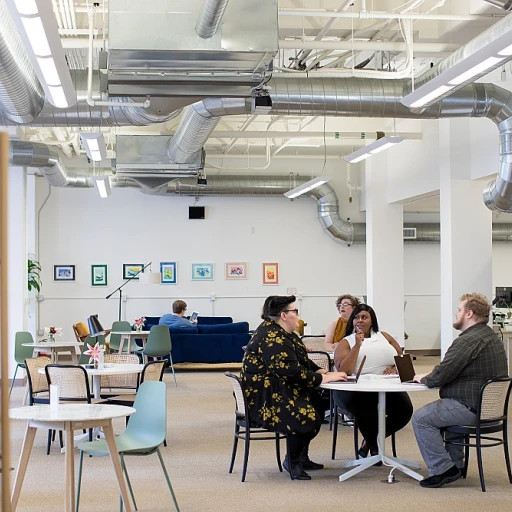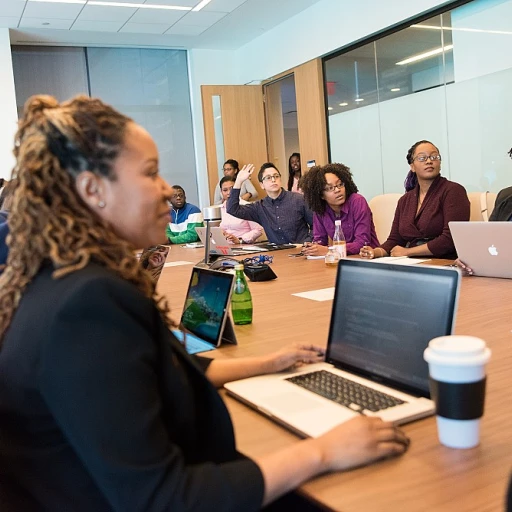
Understanding the Importance of Career Development Programs
Understanding the Value of Career Development in Enterprises
In today's competitive business environment, implementing effective career development programs is crucial for organizations aiming for sustainable growth and success. Career development not only contributes to employee satisfaction and retention but also aligns individual growth trajectories with broader business objectives. By doing so, businesses can foster a dynamic workforce equipped with the necessary skills and motivation to drive innovation and efficiency.
Career development goes beyond individual growth. It plays a significant role in addressing organizational needs by filling critical skill gaps. When companies prioritize development plans, they create opportunities for talent management and leadership cultivation. These programs thus ensure that employees are not only prepared for their current roles but are also ready for future responsibilities, fostering a culture of continuous professional growth.
Moreover, development programs can significantly enhance employee engagement by helping employees set and achieve personal career goals. Through well-structured training and tailored learning opportunities, individuals gain essential skills that boost their confidence and career progression. This alignment of employee aspirations with organizational missions ultimately contributes to cultivating an engaged and motivated workforce vital for any organization’s long-term objectives.
Recognizing the importance of establishing effective career development initiatives is a foundational step in ensuring broader professional development and organizational resilience. Alongside assessing the needs of both the company and its employees, these programs form the backbone of strategic workforce planning, empowering employees to achieve their career goals while satisfying the overarching needs of the organization.
Assessing Organizational Needs and Employee Goals
Identifying the Needs of Both the Organization and Employees
In order to establish effective career development programs, it is crucial to first assess the unique needs of both the organization and its employees. Aligning career development initiatives with these needs ensures that the programs support long-term business objectives while also fostering employee engagement and growth.
Understanding Organizational Objectives
Begin by examining the strategic goals of the company. This involves understanding the desired future state of the business and identifying skills that are critical for achieving these objectives. Business leaders and HR professionals should collaborate to determine which roles are essential for driving business success and where there may be gaps in current workforce skills.
Recognizing Employee Career Goals
Equally important is gaining insight into the career goals and aspirations of employees. Offering employees a platform to voice their development interests can reveal valuable information about their professional development goals. Surveys, interviews, and feedback sessions can be helpful tools in this process, allowing management to gauge the training development opportunities employees are most interested in. These insights inform tailored development plans that align with both the organization’s needs and employee career aspirations.
Bridging Organizational Needs with Employee Development
The ultimate aim is to find a balance between organizational objectives and individual career goals, ensuring that development programs are beneficial to both parties. For example, if a company aims to enhance leadership capabilities within its ranks, it should explore offering leadership training programs to employees aspiring to fill managerial roles. Similarly, if an employee aims to transition into a new role, aligning their personal development goals with a relevant role in the company creates a win-win scenario.
Designing a Tailored Career Development Framework
Creating a Customized Career Framework
Designing a career development framework tailored to an organization is crucial for fostering long-term business success and employee engagement. It involves understanding that each company and its workforce have unique aspirations, skills, and development goals. A customized framework can help employees navigate their career progression and fill in the gaps between their current role and their desired career goals.
To design this framework, organizations should first align the structure with their broader business objectives. Doing so ensures that employee skills development contributes not only to individual growth but also the company's overall mission and vision. Developing a coherent framework involves collaboration with leadership, HR professionals, and employees themselves.
A robust career development framework will typically include:
- Assessment of Individual Goals: Understanding personal and professional ambitions helps align career development programs with employee goals, ensuring strategies and learning opportunities are relevant and impactful.
- Development Opportunities: Identify specific skills and competencies needed for different pathways, allowing employees to plan their development program effectively. This could include on-the-job training, workshops, or formal education.
- Mentorship and Leadership Programs: Establish opportunities for employees to engage with mentors and participate in leadership training. This promotes a culture of knowledge sharing and professional development within the organization.
- Personalized Development Plans: Effective career growth is achieved through tailored development plans, supporting individual learning and career goals. Align these plans with the growth trajectory of the organization.
Once a framework is set, it's vital to communicate it clearly to employees, helping them understand available professional development opportunities and how they relate to their personal aspirations. Continual evaluation ensures that the program adapts to evolving organizational needs and employee feedback, thus encouraging sustained employee development. Organizations that successfully create such a framework can expect higher employee engagement and retention.
Incorporating technology can greatly enhance the customization of these frameworks. Tools like learning management systems and career assessment software enable more personalized employee training and development. For further tips on leveraging technology effectively in your career framework, you might want to explore learning and development consultant roles.
Leveraging Technology in Career Development
Utilizing Technological Solutions for Professional Growth
In the current digital era, technology plays a significant role in advancing employee development programs. Harnessing the right technological tools can streamline career progression and enable employees to take ownership of their professional growth. Firstly, incorporating learning management systems (LMS) simplifies the process of delivering targeted employee training and skills development. These platforms offer a wide range of courses and learning materials tailored to the varied needs of your workforce, allowing for both self-paced learning and structured training sessions. This adaptability ensures training development is accessible to everyone, regardless of their current role or career goals. Moreover, technology enables real-time tracking of employee engagement in development programs. By monitoring participation levels and progress, organizations can identify potential barriers to learning and adjust their strategies accordingly. This data-driven approach helps in the formulation of a development plan that aligns with both organizational objectives and employee goals. Employee career platforms with career development features can help employees establish clear leadership and professional development paths. With well-designed interfaces and personalized recommendations, these tools assist employees in setting realistic, long-term career goals and identifying the steps necessary to achieve them. Implementing technology in development plans also opens up numerous development opportunities. For example, virtual mentoring programs connect employees with experienced professionals, offering guidance, support, and knowledge-sharing. These initiatives enhance employee growth by providing insights into diverse career trajectories and business environments. To ensure successful integration of technology in career development, it is vital to evaluate your organization's unique needs and select tools that complement existing development goals and business strategies. As the digital landscape continues to evolve, staying abreast of technological advancements will be key to sustaining an effective career development program.Implementing and Managing Career Development Programs
Implementing Strategies for Career Development Programs
Enacting career development programs in businesses requires thoughtful execution. Careful planning needs to be accompanied by efficient implementation strategies to ensure that employees can truly benefit from these programs. Firstly, companies should clearly communicate the purpose and expectations of these initiatives. Setting clear goals and transparent communication channels helps in aligning organizational objectives with employees' development plans. Establishing a framework where roles, responsibilities, and outcomes are defined will make the programs more effective. To maximize the impact of these programs, it’s crucial to integrate training and development opportunities into the current role of the employees. Use their existing skillsets while also offering avenues for additional learning and development. This balanced approach ensures employees are engaged and contribute to the organization’s growth while simultaneously working on their career progression. Making leadership accessible is another vital component. Leaders need to exhibit supportive behaviors and act as mentors or coaches rather than just supervisors. By doing so, they not only help employees outline their career goals but can also assist in crafting personalized development plans that lead to professional growth. Moreover, consider establishing a buddy system where more experienced professionals guide their less experienced colleagues. Such professional relationships can significantly impact employee engagement and provide insights into potential career paths within the company. Additionally, leveraging digital tools can streamline employee development and learning processes. Platforms that enable skill gaps analysis, career tracking, and ongoing performance feedback can be invaluable. They provide a structured avenue for employees to fill in their career development goals while aligning with the company’s long-term vision. In essence, the success of any employee career development program depends on thorough planning, effective communication, supportive leadership, and taking full advantage of technology. Through these, businesses can not only foster an empowering work environment but also propel individuals towards achieving their long-term career aspirations.Measuring Success and Iterating on Career Development Initiatives
Evaluating Success Through Measurable Metrics
The final and crucial phase of implementing career development programs in a corporation involves measuring the success of these initiatives. The metrics chosen to evaluate can define the trajectory of employee growth and the organizational benefits reaped. It's essential to select tangible and relevant metrics that align with the goals established in the early stages of program planning.
Key Performance Indicators for Development Programs
When considering how to measure the efficacy of your career development and employee training programs, focus on these Key Performance Indicators (KPIs):
- Employee Engagement Levels: Higher engagement often indicates that employees feel valued and see potential for career progression within the organization.
- Achievement of Career Goals: Monitoring progress towards career goals helps gauge the effectiveness of learning and development plans.
- Skill Acquisition and Application: Assess if the skills acquired through training are being applied in daily tasks, contributing to the company's goals.
- Employee Satisfaction Surveys: Feedback from employees can help assess their satisfaction with the development opportunities provided.
Iterating for Continuous Improvement
Once you have gathered sufficient data from the assessment of KPIs, use this information to refine and iterate on existing development programs. Identifying areas for improvement helps in tailoring future initiatives to better meet the development goals of employees and the strategic objectives of the organization. By continuously evaluating and updating the development framework, a company can enhance leadership preparation, fill roles more effectively, and support the long-term growth of its talent pool.
Remember, the ultimate aim of these programs is to not only advance employees in their current role but also prepare them for future opportunities, fostering a culture of growth and continuous learning across the organization.













